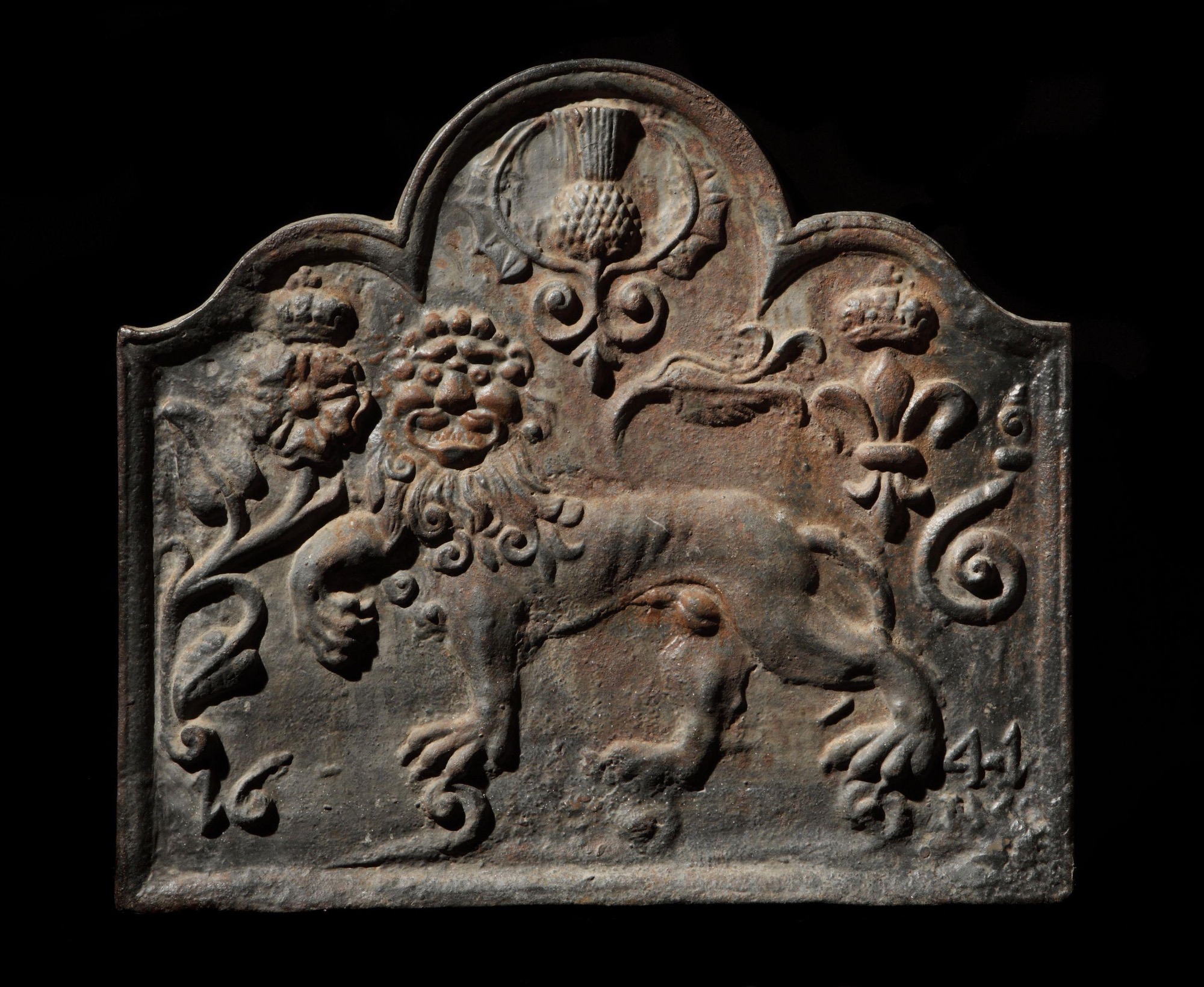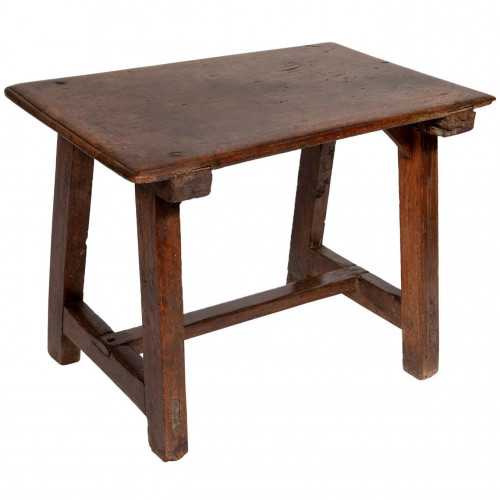A Scottish, cast iron fire back dated 1641
10950
The arched top has a large thistle in the centre. The thistle is the national flower of Scotland and and this prickly-leaved purple flower was first used in the 15th century as a symbol of defence.
There is a large rose on the left hand side surmounted by a crown, most likely symbolising the White Rose of York which was later used as the badge of Jacobitism in England and Scotland. The heraldic rose shown here has a stylized form consisting of five symmetrical lobes, five barbs, and a circular seed. Here it most likely represents Charles I.
There is a large fleur-de-lys on the upper right hand side surmounted by a crown, most likely symbolising the "Auld Alliance" which was based on a need, shared by Scotland and France, to contain English expansion. While the fleur-de-lis is particularly associated with the French monarchy and remains an enduring symbol of France. According to French historian Georges Duby, the three leaves represent the medieval social classes: those who worked, those who fought and those who prayed. Here is most likely represents Henrietta Maria, sister of Louis XIII who married Charles I in 1626.
The magnificent "lion passant guardant" is walking, with the right fore paw raised and all others on the ground. The leopard or lion passant guardant is a frequently used charge in heraldry and mostly appears in groups of three, which are positioned over each another as in the arms of England.
The symbol of a lion has been used as a heraldic device for many centuries by Scottish Kings although the Scottish lion has always been shown, on the royal shield, as being Rampant,
The fireback is dated '1641', the time of the 'Bishops Wars. This series of civil wars engulfed England in the 1640s and 50s, and is known to modern historians as the Wars of the Three Kingdoms. The Covenanters who opposed the interference by the Stuart kings in the affairs of the Presbyterian Church of Scotland were governing Scotland. They raised a large army of their own and tried to impose their religious settlement on Episcopalians and Roman Catholics in the north of the country.
Height 70 cm., 27 ½ in., Length 78.7 cm 31 in., Depth 3 cm 1 ¼ in.,
17th Century
1641
Iron
Scottish
Commemorative










